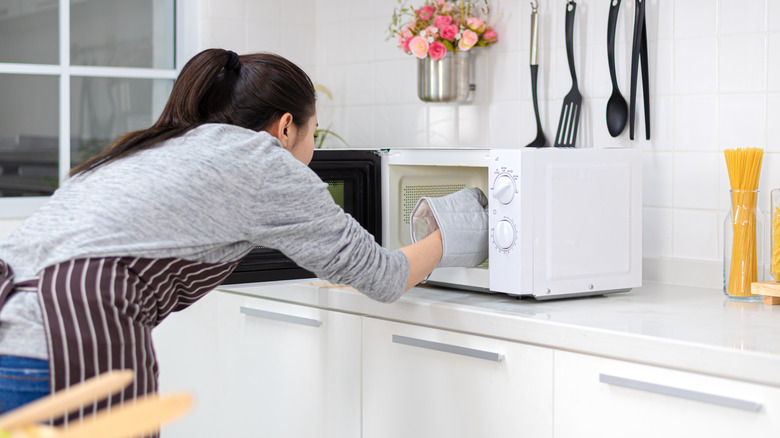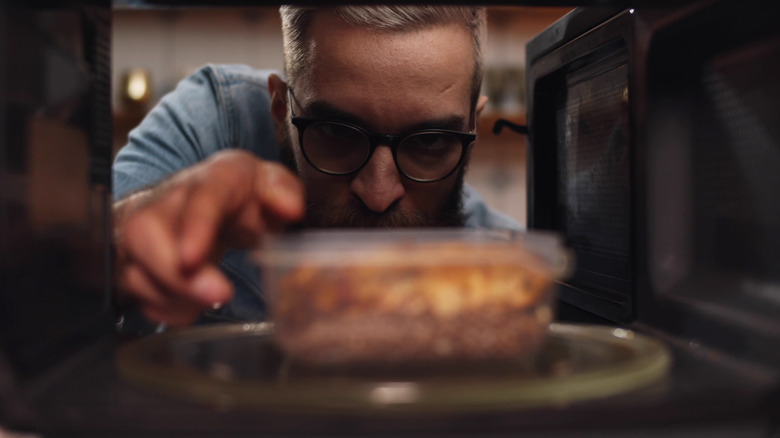Can You Put Wax Paper In The Microwave?
Wax paper and parchment paper certainly look similar, but in terms of function, they're pretty different. The difference lies right in the name. As Bon Appétit explains, wax paper is coated on both sides with a thin layer of paraffin wax. The surface is designed to wick away moisture and to prevent food from sticking to it. Because it's wax, however, it can't withstand high temperatures. As with any wax, the kind used on wax paper will melt if exposed to excessive heat. That means it's unfortunately not interchangeable with parchment paper, which is instead coated with heat-resistant silicone, and is designed to withstand temperatures as high as 450 degrees.
With this said, while wax paper would never survive in the oven, according to FoodsGuy, it does fine in the microwave. This is because the microwave's heat is unlikely to reach the temperature needed to melt the wax in wax paper, which the outlet says is about 200 degrees Fahrenheit. Note that MasterClass says the melting point is even higher, at 420 degrees Fahrenheit. Still, the point stands: while wax paper won't last long in an oven, it will be fine in a microwave.
Wax paper is safer to use in the microwave than plastic wrap
When you heat your food in the microwave, there's a pretty good chance it's in either some sort of Tupperware, or on a plate covered in plastic wrap. Plastic wrap is a common way to keep leftovers fresh, but according to the U.S. Department of Agriculture, if you decide to heat those leftovers up, you're better off using wax paper instead.
Wax paper is not only microwave-safe, it's much safer to heat than plastic, per the USDA. Whereas wax paper is made up of only paraffin wax and paper, plastic containers and plastic wrap contain harmful chemicals that can end up in your food when heated. As The Spruce Eats further elaborates, paraffin wax is actually the same wax you'll find on cheese, and is composed mainly of vegetable oils and palm oil derivatives that can be safely ingested. If it were to end up on your food after being heated in the microwave, it would be perfectly safe to eat.

